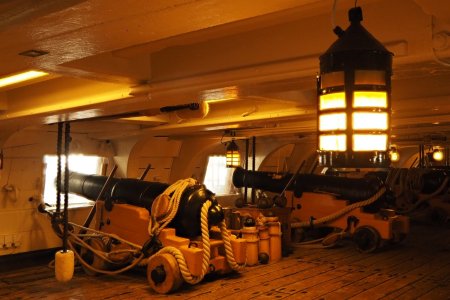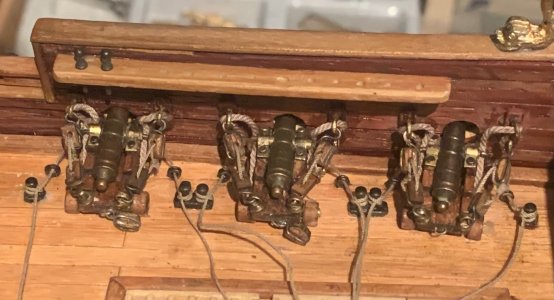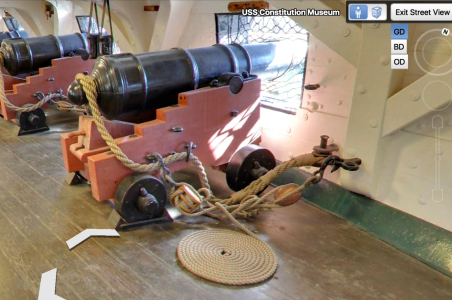-

Win a Free Custom Engraved Brass Coin!!!
As a way to introduce our brass coins to the community, we will raffle off a free coin during the month of August. Follow link ABOVE for instructions for entering.
You are using an out of date browser. It may not display this or other websites correctly.
You should upgrade or use an alternative browser.
You should upgrade or use an alternative browser.
- Joined
- Dec 14, 2021
- Messages
- 341
- Points
- 168

The problem is not the making of tiny blocks, it’s the threading of them. 1.7mm is the smallest I sell as I think it’s a better option. There is no real visual difference between 1.5 and 1.7 but that extra 0.2mm allows for an ever so slightly bigger hole for the thread, which means the end user is much less likely to have to ream them out. As I’m sure you would testify, these are incredibly small blocks, bordering on the limits of what can be handled.An idea occurred to me. If the gun tackles were to be displayed in storage configuration as shown in @jbradford's photo below, perhaps the blocks could be simulated using tiny glass beads, the ones usually used in making simulated parrel trucks, and some thin thread?
That size is incredible. About 6.5" at 1:100 scale! WOW. Are they wood, or cardstock r something else? Thanks1.7mm is the smallest I sell as I think it’s a better option
Allan
Indeed. I usually open the holes in the 1.5mm block a little with the Archimedes drill and a very small drill bit. Doable, but meticulous work.The problem is not the making of tiny blocks, it’s the threading of them. 1.7mm is the smallest I sell as I think it’s a better option. There is no real visual difference between 1.5 and 1.7 but that extra 0.2mm allows for an ever so slightly bigger hole for the thread, which means the end user is much less likely to have to ream them out. As I’m sure you would testify, these are incredibly small blocks, bordering on the limits of what can be handled.
- Joined
- Jan 23, 2021
- Messages
- 598
- Points
- 353

Take a look at these links
Parts review - Aftermarket naval guns parts to upscale, Part 1/3
* there is no copyright on any images in this review Let's face it...How many of us have been disappointed with the cannons supplied in the kits? Personally, I found that manufacturers don't pay enough attention to cannon details. Often, the carriages are out of scale and made from cast metal...
shipsofscale.com
Parts review - Aftermarket naval guns parts to upscale, Part 2/3
Greetings all. This is way long past-due log of Part 2 of 3 series: Accesories\Uspscale mini kits of naval guns. To those of you who came directly to this post, please follow the below link to get familiar with our discussion about aftermarket naval gun mini kits...
shipsofscale.com
Parts review - Aftermarket naval guns parts to upscale, Part 3/3
"Raise your words not your voice, it is rain that grows flowers, not thunder." Greetings all. This is Part 3 of 3 series log Accesories\Uspscale mini kits of naval guns. It is not the typical review, where the review subject is giving evaluation, it is rather the parts 'in action', In other...
shipsofscale.com
Thanks again, Allan. This has come just in time for me, as I'm at that stage on my Jotika 'Vic'. 2mm singles are in the kit, but the instructions show 2 x singles. I'm sure I will struggle with 2mm, so I've switched to 3mm, which I think is a 'happy medium', & have just received 100 each from Cornwall MBs. I couldn't find 2mm doubles, well not at what I call a reasonable price - postage nowadays is a killer.The blocks are oversized and upside down so maybe not what you want to duplicate.
The following is from Adrian Caruana's The History of English Sea Ordnance Volume 2. His book is the most researched available for English guns and tackle.
In general guns under 32 pounder had train tackle with two single blocks. 32 pounders and heavier had a single and double on each side of the carriage. Each block was equipped with a hook. The same goes for the train tackle. The train tackle came into use in the early 18th century so would not be on earlier English ships.
Rope circumferences
The breech rope size varied with caliber and era. It was between 4 and 7 inches in circumference depending on caliber and era. The securing of the breech rope to the bulwark rings varied a lot with era as well.
The following chart is from the Sea Gunner's Vade Mecum 1812. It is limited by date but at our scales, a pretty good guide.
Allan
View attachment 514669
The blocks can be sized according to the rope diameter but it gets a little complex.
From David Steel, page 153 (the entire book can be found at https://maritime.org/doc/steel/
THE proportions for single, double, treble, fourfold, and other blocks, are as follow; viz. the length is 8 times the breadth of the sheave-hole, which is one-sixteenth of an inch more than the thickness of the sheave; the thickness of the sheave is one-tenth more than the diameter of the rope it is intended for, and the diameter of the sheave is five times the thickness. The breadth of the block to be six times the thickness of the sheave, and the thickness to be one half the length, or nearly so.
IF my math is correct for the 2.5" tackle rope the block would be about 7 1/4" long
For the 2" tackle the block would be about 5 3/4" long.
By the same token you can just take the circumference and multiply by 3 and you will be very close.
Allan
This is the layout I be using, me 'Earty'!Spare the science this is how Victory cannons were rigged.
View attachment 514723
View attachment 514724
View attachment 514725
- Joined
- Dec 14, 2021
- Messages
- 341
- Points
- 168

There's quite a big difference, visually, between 2mm and 3mm. The tricky bit with the micro blocks is getting the blasted thread through the block as the holes are too small for a needle threader, but (as everyone but me already seemed to know!), if you make the end rigid with a bit of CA and cut it diagonally, it goes. I'm not sure I'd want to do them all day long but will find out soon enough when I start rigging my 1:100 Victory guns!I'm sure I will struggle with 2mm, so I've switched to 3mm
(I have 2mm doubles in resin BTW).

Hi Kevin, I do have some of your 5mm blocks (excellent). I measured my 3mm dbls, which are 3.7mm, so that makes them virtually 4mm. With a bit of work (time consuming) with a needle file I could reduce them to 3mm. My problem is more carpel tunnel related, so as a compromise I think I'll be ordering some of your 2.5 dbls. soon.There's quite a big difference, visually, between 2mm and 3mm. The tricky bit with the micro blocks is getting the blasted thread through the block as the holes are too small for a needle threader, but (as everyone but me already seemed to know!), if you make the end rigid with a bit of CA and cut it diagonally, it goes. I'm not sure I'd want to do them all day long but will find out soon enough when I start rigging my 1:100 Victory guns!
(I have 2mm doubles in resin BTW).
View attachment 516118
Stuart
- Joined
- Dec 14, 2021
- Messages
- 341
- Points
- 168

Ahh, now I've joined some dots and many thanks for the compliment. I think I added the micro blocks a little later, after you'd bought the 5mm's.
Ahh, now I've joined some dots and many thanks for the compliment. I think I added the micro blocks a little later, after you'd bought the 5mm's.
 Thanks,Kevin, I've just ordered 2.5 dbls.
Thanks,Kevin, I've just ordered 2.5 dbls.- Joined
- Dec 14, 2021
- Messages
- 341
- Points
- 168

Thank you very much, they’ll be in the post tomorrow
Glassbeads are a good idea .I also had to use oversized blocks for the carriages (4mm). I will the try the glassbeads by my next model.Attachment is with oversized blocks on LaCouronneThe smallest fully rigged gun I was able to achieve is a 9 pounder at 1:100 scale.
View attachment 514920
This had to be done by rigging the barrels and breeching lines first, then slipping the gun tackle rigged carriages under the barrels and gluing the eyebolts of those gun tackles to the bulwark as the final step. The use of hooks had to be abandoned, and eyelets were tied to blocks using black sewing thread.
View attachment 514923
Everything was accomplished using an eye magnification headset and careful tweezer work using CA glue and pre-drilled holes in the bulwarks. Even so, it is delicate, and it is difficult not to tear a a gun tackle apart or crunch something.
View attachment 514921
The four 6 pound sakers shown at the forecastle bulkhead proved too small to allow making of gun tackles at 1:100 scale, and the carriages had to be scratch built. It may be possible to create simulated blocks using globs of glue approximately 0.5mm in diameter onto thread in micro gun tackle assemblies, but since these sakers were covered by the upper forecastle deck anyway, that attempt was abandoned. Personnally, rigging cannon carriages is one of the more interesting and fun parts of a build.
View attachment 514924
An idea occurred to me. If the gun tackles were to be displayed in storage configuration as shown in @jbradford's photo below, perhaps the blocks could be simulated using tiny glass beads, the ones usually used in making simulated parrel trucks, and some thin thread? HiS Model in Czech Republic sells very tiny etched brass eyelets which could be used in the tiny gun tackles.
View attachment 514926
Brown glass beads used in making parrels
View attachment 514925


- Joined
- Nov 24, 2025
- Messages
- 48
- Points
- 48

The Model Shipways kit of the USS Constitution cross-section has the breech lines terminated in hooks that attach to a single vertical ring on each side..
Yet the present day ship has the breech lines ending with spliced thimbles that appear to be bolted between two horizonal rings.


I'm going to go with what's actually on the ship, which is supposed to represent the 1812 era.
A hook in battle doesn't seem secure enough to prevent a gun from blasting its own ship if a hook was knocked loose by enemy action just as the cannon fired.
Yet the present day ship has the breech lines ending with spliced thimbles that appear to be bolted between two horizonal rings.


I'm going to go with what's actually on the ship, which is supposed to represent the 1812 era.
A hook in battle doesn't seem secure enough to prevent a gun from blasting its own ship if a hook was knocked loose by enemy action just as the cannon fired.


